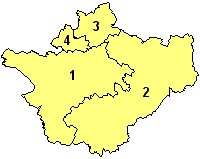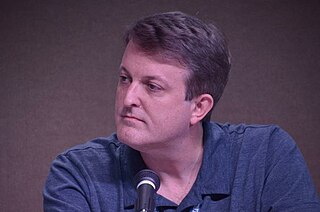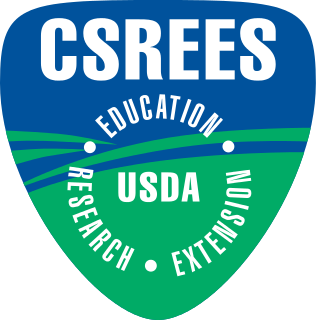Related Research Articles

Leavenworth is the county seat and largest city of Leavenworth County, Kansas, United States and is part of the Kansas City metropolitan area. As of the 2010 census, the city population was 35,251. It is located on the west bank of the Missouri River. The site of Fort Leavenworth, built in 1827, the city became known in American history for its role as a key supply base in the settlement of the American West. During the American Civil War, many volunteers joined the Union Army from Leavenworth. The city has been notable as the location of several prisons, particularly the United States Disciplinary Barracks and United States Penitentiary, Leavenworth.

Hays is a city in and the county seat of Ellis County, Kansas, United States. The largest city in northwestern Kansas, it is the economic and cultural center of the region. As of the 2010 census, the city population was 20,510. It is also a college town, home to Fort Hays State University.

The University of Kansas (KU) is a public research university with its main campus in Lawrence, Kansas, and several satellite campuses, research and educational centers, medical centers, and classes across the state of Kansas. Two branch campuses are in the Kansas City metropolitan area on the Kansas side: the university's medical school and hospital in Kansas City, the Edwards Campus in Overland Park, a hospital and research center in the state's capital of Topeka, and a hospital and research center in Hays. There are also educational and research sites in Garden City, Hays, Leavenworth, Parsons, and Topeka, an agricultural education center in rural north Douglas County, and branches of the medical school in Salina and Wichita. The university is a member of the Association of American Universities and is classified among "R1: Doctoral Universities – Very high research activity".

A financial endowment is a legal structure for managing, and in many cases indefinitely perpetuating, a pool of financial, real estate, or other investments for a specific purpose according to the will of its founders and donors. Endowments are often structured so that the principal value is kept intact, while the investment income or a small part of the principal is available for use each year.

A civil parish is a country subdivision, forming the lowest unit of local government in England. There are 104 civil parishes in the ceremonial county of Berkshire, most of the county being parished; Reading is completely unparished; Bracknell Forest, West Berkshire and Wokingham are entirely parished. At the 2001 census, there were 483,882 people living in the 104 parishes, accounting for 60.5 per cent of the county's population.

A civil parish is a country subdivision, forming the lowest unit of local government in England. There are 333 civil parishes in the ceremonial county of Cheshire, most of the county being parished. At the 2001 census, there were 565,259 people living in 332 parishes, accounting for 57.5 per cent of the county's population.

ArcGIS is a geographic information system (GIS) for working with maps and geographic information maintained by the Environmental Systems Research Institute (Esri). It is used for creating and using maps, compiling geographic data, analyzing mapped information, sharing and discovering geographic information, using maps and geographic information in a range of applications, and managing geographic information in a database.
Health promotion is, as stated in the 1986 World Health Organization (WHO) Ottawa Charter for Health Promotion, "the process of enabling people to increase control over, and to improve, their health. To reach a state of complete physical, mental and social well-being, an individual or group must be able to identify and to realize aspirations, to satisfy needs, and to change or cope with the environment. Health is, therefore, seen as a resource for everyday life, not the objective of living. Health is a positive concept emphasizing social and personal resources, as well as physical capacities. Therefore, health promotion is not just the responsibility of the health sector, but goes beyond healthy life-styles to well-being".
The cancer Biomedical Informatics Grid (caBIG) was a US government program to develop an open-source, open access information network called caGrid for secure data exchange on cancer research. The initiative was developed by the National Cancer Institute and was maintained by the Center for Biomedical Informatics and Information Technology (CBIIT). In 2011 a report on caBIG raised significant questions about effectiveness and oversight, and its budget and scope were significantly trimmed. In May 2012, the National Cancer Informatics Program (NCIP) was created as caBIG's successor program.
Photovoice is a qualitative method used in community-based participatory research to document and reflect reality. It is an empowering and flexible process that combines photography with grassroots social action and is commonly used in the fields of community development, international development, public health, and education. Participants include community members of all ages and status including those who are discriminated against due to language, gender, race, class, disability, etc. Through their art, they bring new insights and perspectives which raise awareness of hidden or overlooked issues and aspects of the community.

The Linux Foundation (LF) is a non-profit technology consortium founded in 2000 as a merger between Open Source Development Labs and the Free Standards Group to standardize Linux, support its growth, and promote its commercial adoption. It also hosts and promotes the collaborative development of open source software projects.
The Handle System is the Corporation for National Research Initiatives's proprietary registry assigning persistent identifiers, or handles, to information resources, and for resolving "those handles into the information necessary to locate, access, and otherwise make use of the resources".

Orfeo Toolbox (OTB) is a library for remote sensing image processing. The project was initiated by the French space agency (CNES) in 2006 and is under heavy development. The software is released under a free licence; a number of contributors outside CNES are taking part in development and integrating into other projects. The goal is to provide potential users of satellite images with all the tools necessary to use these images. The library is originally targeted at high resolution images acquired by the Orfeo constellation: Pleiades satellites and Cosmo-Skymed but also handles other sensors.

Kevin Wayne Yoder is an American politician who served as a member of the United States House of Representatives for Kansas's 3rd congressional district from 2011 to 2019. A Republican, Yoder was the Kansas State Representative for the 20th district from 2003 to 2011.
The Center for Disease Dynamics, Economics & Policy (CDDEP) is a public health research organization with headquarters in Washington, D.C. and New Delhi. Its mission is "to produce independent, multidisciplinary research to advance the health and well-being of human populations in the United States and around the world."
Data Observation Network for Earth (DataONE) is a platform for environmental and ecological science, to provide access to Earth observational data. Supported by funding from the US National Science Foundation as one of the initial DataNet programs in 2009, funding was renewed in 2014 through April 2015. DataONE helps preserve, access, use, and reuse of multi-discipline scientific data through the construction of primary cyberinfrastructure and an education and outreach program. DataONE provides scientific data archiving for ecological and environmental data produced by scientists. DataONE's goal is to preserve and provide access to multi-scale, multi-discipline, and multi-national data. Users include scientists, ecosystem managers, policy makers, students, educators, librarians, and the public.

Timothy Patrick Farley is a computer software engineer, writer and instructor who lives in Atlanta, Georgia. He is an expert in computer security and reverse engineering as well as a skeptic. He was a research fellow of the James Randi Educational Foundation. Tim Farley is the creator of the website What's The Harm?, a resource where stories are documented and categorized about the damage done when people fail to use critical thinking skills. Farley was also instrumental in the apprehension of spammer "David Mabus."

Eugene Weston Hobbs II, known as Gene Hobbs is an American technical diver and founding board member of the non-profit Rubicon Foundation. Hobbs has served as medical officer for the Woodville Karst Plain Project since 2004 and was named the 2010 Divers Alert Network/ Rolex Diver of the year. Hobbs was a hyperbaric technologist and simulation coordinator at Duke Medical Center before taking a position as the Director of Simulation for the University of North Carolina School of Medicine and Clinical Instructor in the Department of Pediatrics. As of 2018, Hobbs is the business manager for the UNC Health Care Department of Neurosurgery.

The Cooperative State Research, Education, and Extension Service (CSREES) was an extension agency within the U.S. Department of Agriculture (USDA), part of the executive branch of the federal government. The 1994 Department Reorganization Act, passed by Congress, created CSREES by combining the former Cooperative State Research Service and the Extension Service into a single agency.

Truth Initiative is a nonprofit tobacco control organization "dedicated to achieving a culture where all youth and young adults reject tobacco." It was established in March 1999 as a result of the Tobacco Master Settlement Agreement between the attorneys general of 46 states, the District of Columbia and five United States territories, and the tobacco industry. Truth Initiative is best known for its youth smoking prevention campaign. Its other primary aims include conducting tobacco control research and policy studies, organizing community and youth engagement programs and developing digital cessation and prevention products, including through revenue-generating models. The organization changed its name from the American Legacy Foundation to Truth Initiative on September 8, 2015, to better align with its Truth campaign. As of 2016, the organization had more than $957 million in assets and a staff of 133 based primarily in its Washington, D.C., office.
References
- ↑ "About the Center for Community Health and Development". Center for Community Health and Development. 24 September 2013. Retrieved 7 September 2020.
- 1 2 3 "Community Tool Box (free and publicly available)". Work Group for Community Health and Development. University of Kansas. Archived from the original on 2009-03-04. Retrieved 2009-03-04.
- ↑ "The Community Tool Box: A Web-Based Resource for Building Healthier Communities" (PDF). Community Toolbox. Public Health Reports. 2000. Archived from the original (PDF) on 2010-06-17. Retrieved 2010-05-24.
- 1 2 "KU's Community Tool Box a Treasure Chest for Small Towns, Big Cities Across the Globe". infoZine . 2006-10-25. Archived from the original on 2009-03-04. Retrieved 4 March 2009.
- ↑ "Online Community Toolbox a Valuable Resource". Boston University School of Public Health . 1999-12-07. Archived from the original on 2009-03-04. Retrieved 4 March 2009.
- ↑ de la Peña McCook, Kathleen (2000). A Place at the Table: Participating in Community Building. Chicago: American Library Association. p. 38. ISBN 0-8389-0788-1.
- ↑ "The Community Tool Box Receives $60,000 Grant for Spanish Language Translation". Community Tool Box. University of Kansas. 2008. Archived from the original on 2009-03-04. Retrieved 2009-03-04.
- ↑ "Community Tool Box Table of Contents". Community Tool Box. University of Kansas . Retrieved 2010-05-25.
- ↑ Vernon, Robert F. (2006-03-22). "Paper or pixels? An inquiry into how students adapt to online textbooks". Journal of Social Work Education . Archived from the original on 2009-03-04. Retrieved 4 March 2009.
- ↑ Mertens, Donna M. Transformative Research and Evaluation. Guilford Press. p. 338. ISBN 1-59385-302-5.
- ↑ "University of Kansas Work Group for Community Health & Development - About Us". Work Group for Community Health & Development. University of Kansas. 2010. Archived from the original on 2010-06-16. Retrieved 2010-05-24.
- ↑ "University of Kansas Work Group for Community Health & Development - The WHO Collaborating Centre". Work Group for Community Health & Development. University of Kansas. 2010. Archived from the original on 2010-06-16. Retrieved 2010-05-24.